The humble little crown — circular, ribbed, and full of purpose, yet surprisingly, one of the watchmaking’s least interesting parts.
It’s almost routine: each timepiece has one, they’re docked at three o’clock and wind the timepiece’s movement. Sure, some watch crowns differ in form and function, but their inherent function has remained fairly unchanged for nearly two centuries. However, since the ‘60s, watches and watchmakers have served new lifestyles, use-cases, and mechanical missions — repositioning the crown in the process.
Firstly, What’s a Crown?
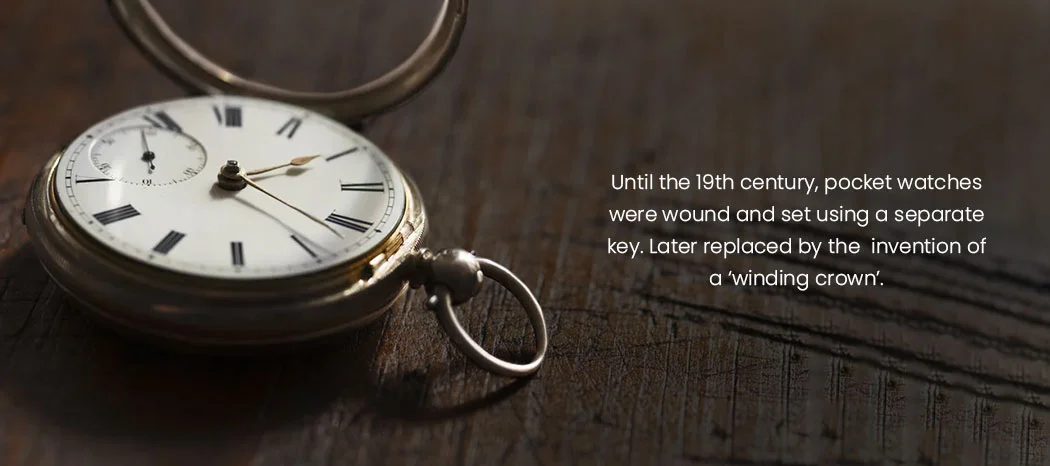
Until the 19th century, pocket watches were wound and set using a separate key. While being inconvenient to carry around, the risk of losing the key or damaging the movement quickly demanded a solution. This came with the invention of a ‘winding crown’ by English watchmaker John Arnold in 1820 and perfected by Antoine-Louis Breguet, circa 1830.
Crowns to watches are control panels to engines. They’re tiny, circular knobs that harness the mechanical brilliance of the watch movement to ensure efficient timekeeping. Placed on the outer sides of the case, they allow the wearer to adjust the time, day, date, moon phase, GMT second hands, or any respective complication on board. Their function may be diverse or complex, depending on the movement.
Despite being directly connected to the intricate and delicate systems of the movement, the crown is traditionally considered part of the case.
How’d We Get to Three O’clock?
As the watch-world’s interest departed from pocket watches to compact ergonomic wristwatches, the crown’s position was displaced. The world’s first-ever wristwatch — Breguet No. 2639, commissioned by Queen Caroline Murat of Naples, was oval-shaped, enriched with a diamond-set bezel, and boasted oversized Arabic indexes for its off-centred dial. While the dial was positioned on the lower half of the case, the crown resided at four o’clock. To ensure the watch crown was ergonomically positioned for winding and adjusting time, it was positioned on the right side of the case — accessible by the right hand’s thumb and index finger. The Breguet Reine De Naples is the maison’s modern-day reincarnation of the original 1810 creation’s elegance and flair.
Nearly a century later, Louis Cartier created the iconic Cartier Santos-Dumont — a special wristwatch for his aviation-obsessed friend, Alberto Santos-Dumont. Considering Cartier’s penchant for elegant geometrics and symmetry, the crown was relocated to the perfect centre of the square case’s right side at three o’clock. Sure, the repositioning from four o’clock did cost a slight compromise in ergonomics, but it created a much simpler, more even geometric canvas to design watch movements and cases. This went on to become the eternal blueprint for watch case and movement design.
Southpaw Special – Destro Watches
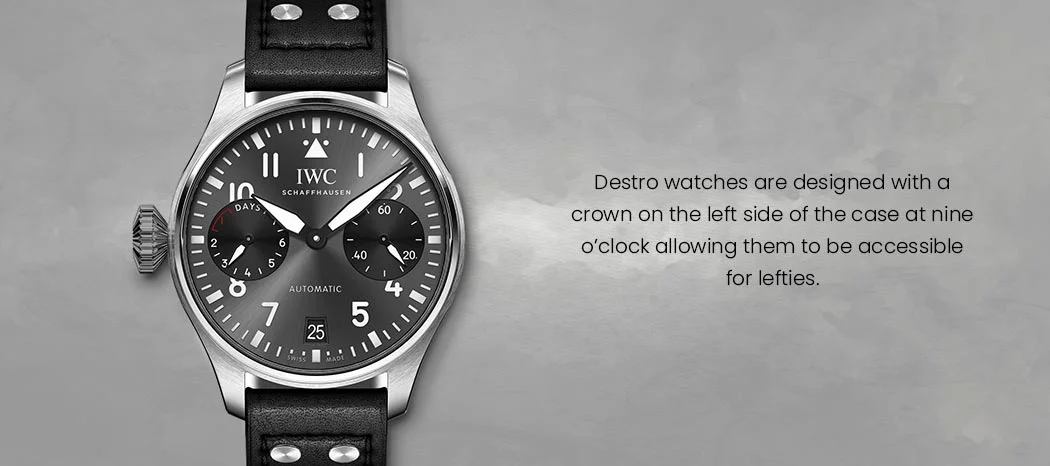
Simply put, ‘Destro’ watches are for 10% of timepiece enthusiasts who are left-handed. Traditionally, timepieces are designed to be worn on one’s lesser dominant hand while the tool for adjusting time (the crown) faces the dominant hand. For them, the arrangement of wearing a watch on the dominant left hand, with a crown protruding out the right side of the case, simply defied every rule of wristwatch ergonomics. Hence, Destro watches are designed with a crown on the left side of the case at nine o’clock (opposite of three o’clock), allowing them to be accessible for lefties. If you’re looking to invest in one, here’s our buying guide.
All the Way Round the Clock
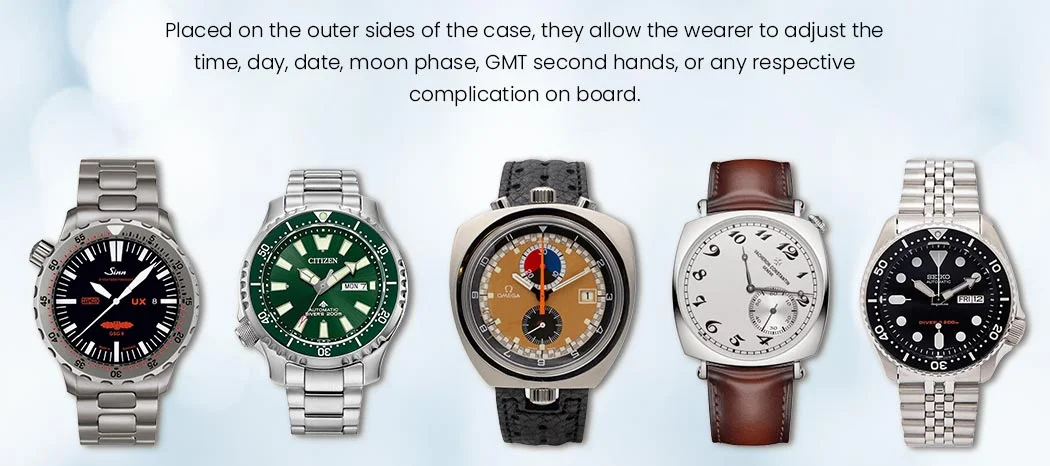
So far, the crown has navigated through the traditional three, four, and nine o’clock spots, but well, there’s plenty more to your surprise:
- The legendary SEIKO Diver, SKX007, bears its crown at four o’clock. Designed for the harshest deep-sea explorations and ergonomic timekeeping while you’re at it, the SKX007 and its ancestors, dating back to the 1960s, earned a reputation for robustness and practical design – intelligently evolving through generations.
- Another historical diver is the German-made Sinn U50, whose crown is typically at four o’clock, but a few special editions see it moved to 10 o’clock. It’s also water resistant to 500 metres.
- Next, a diver that’s capable of withstanding the ocean’s extremities yet doesn’t break the bank: the Citizen Promaster Dive Automatic ‘Fugu’ edition. This is technically a lefty edition with its crown at eight o’clock. It measures 44 millimetres wide and offers a heavy dose of legibility.
- As a tribute to the racing 1960s, the OMEGA Seamaster Bullhead, with its crown at twelve o’clock, is as strange as it is cool. Originally released in 1969, OMEGA saw design ergonomics slightly differently. With two chronograph pushers surrounding the crown up top, it features a second winder down South for the internal rotating bezel.
- In 1921, Vacheron Constantin was approached by a vintage car collector who commissioned a timepiece that could offer angular legibility while driving. By rotating the angle of the dial of the Historiques American 1921 by 45 degrees, the timepiece could be read while the driver kept his hands on the steering wheel. In the process, the crown migrated to twelve o’clock and small seconds to three o’clock.
Why Stop at One? (Or None)
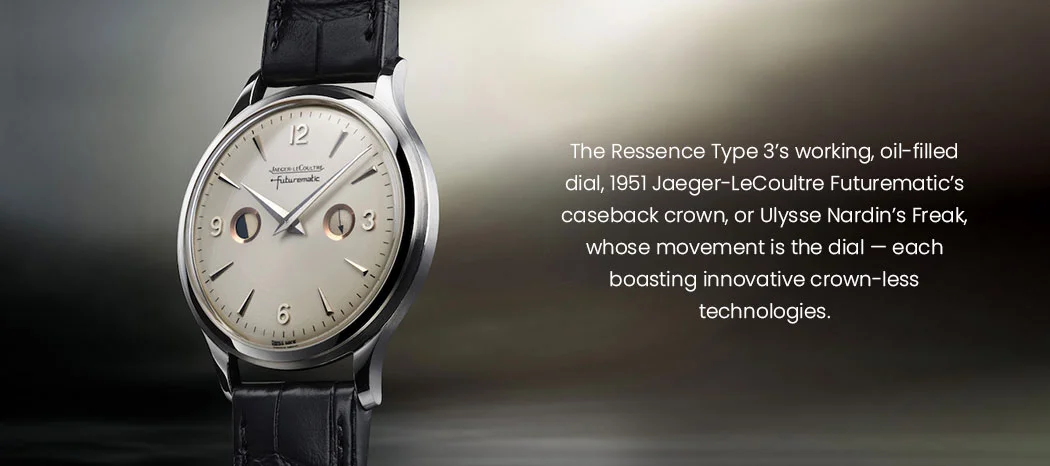
Before reading this article, you believed that watch crowns can be displaced. Turns out, they also vanish as well as multiply. Timepieces, or pocket watches, were originally crownless and employed an external key to wind the movement. In recent years, watchmakers have returned to this original concept, creating slimmer case dimensions and smoother aesthetics. Take the Ressence Type 3’s working, oil-filled dial, 1951 Jaeger-LeCoultre Futurematic’s caseback crown, or Ulysse Nardin’s Freak, whose movement is the dial — each boasting innovative crown-less technologies.
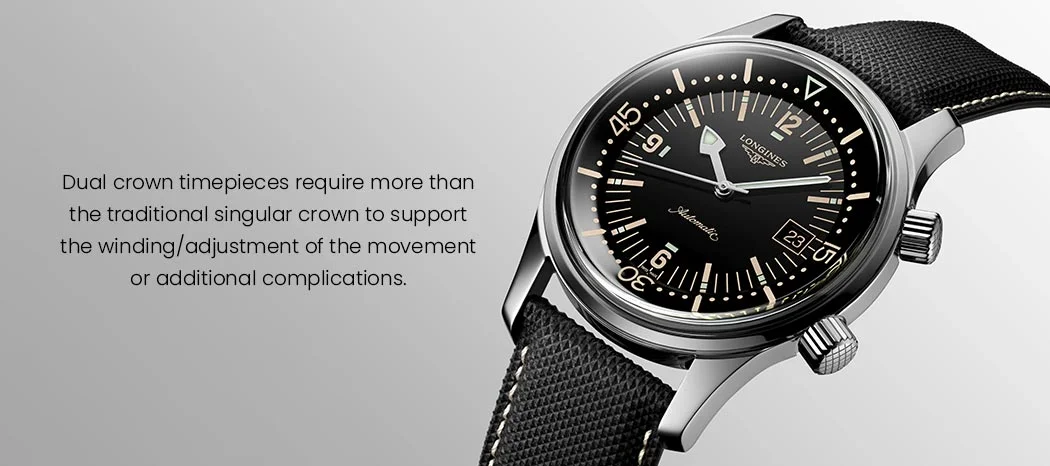
While technologies can be concealed and tucked under the dial — some prefer a second helping hand. Dual crown timepieces require more than the traditional singular crown to support the winding/adjustment of the movement or additional complications. Famous examples include the Mido Multifort 8 Two Crowns, Baltic Aquascaphe Dual-Crown, Longines Legend Diver Automatic, and the Hamilton Khaki Aviation Pilot Pioneer Auto.

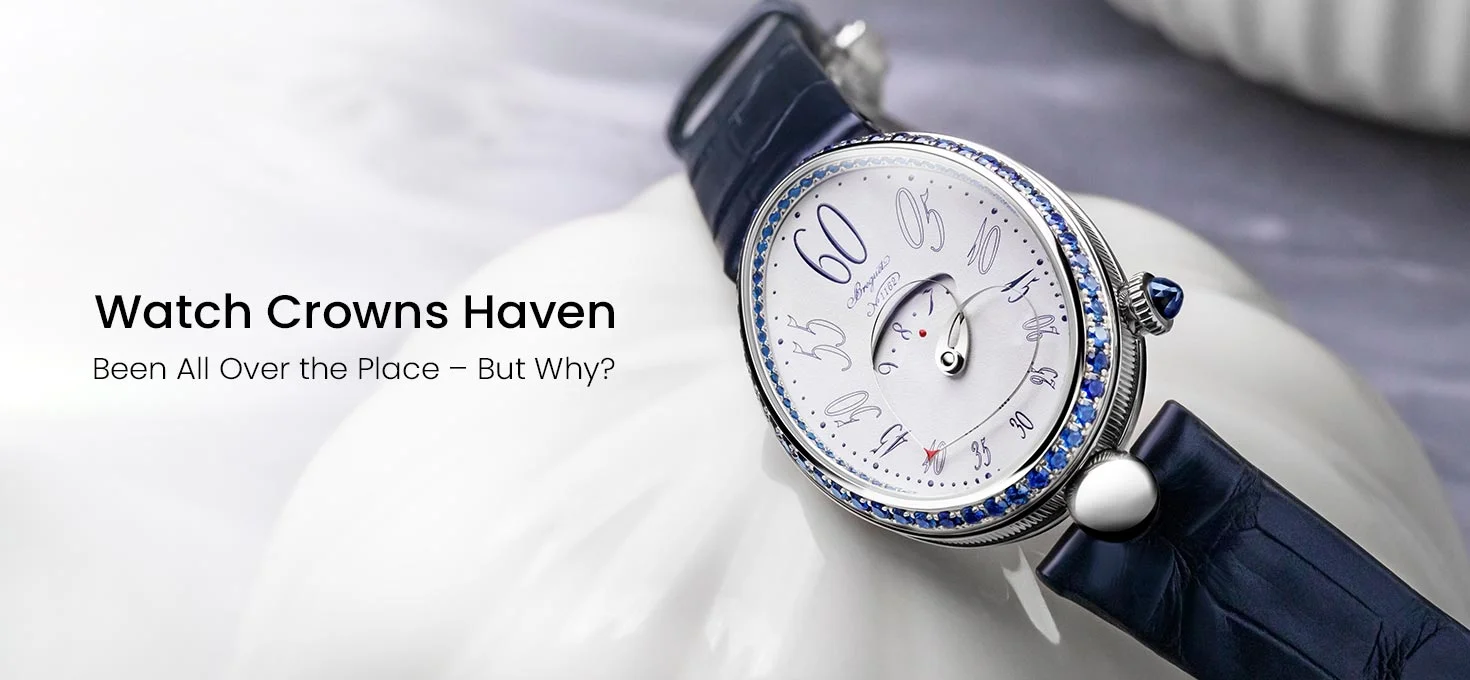


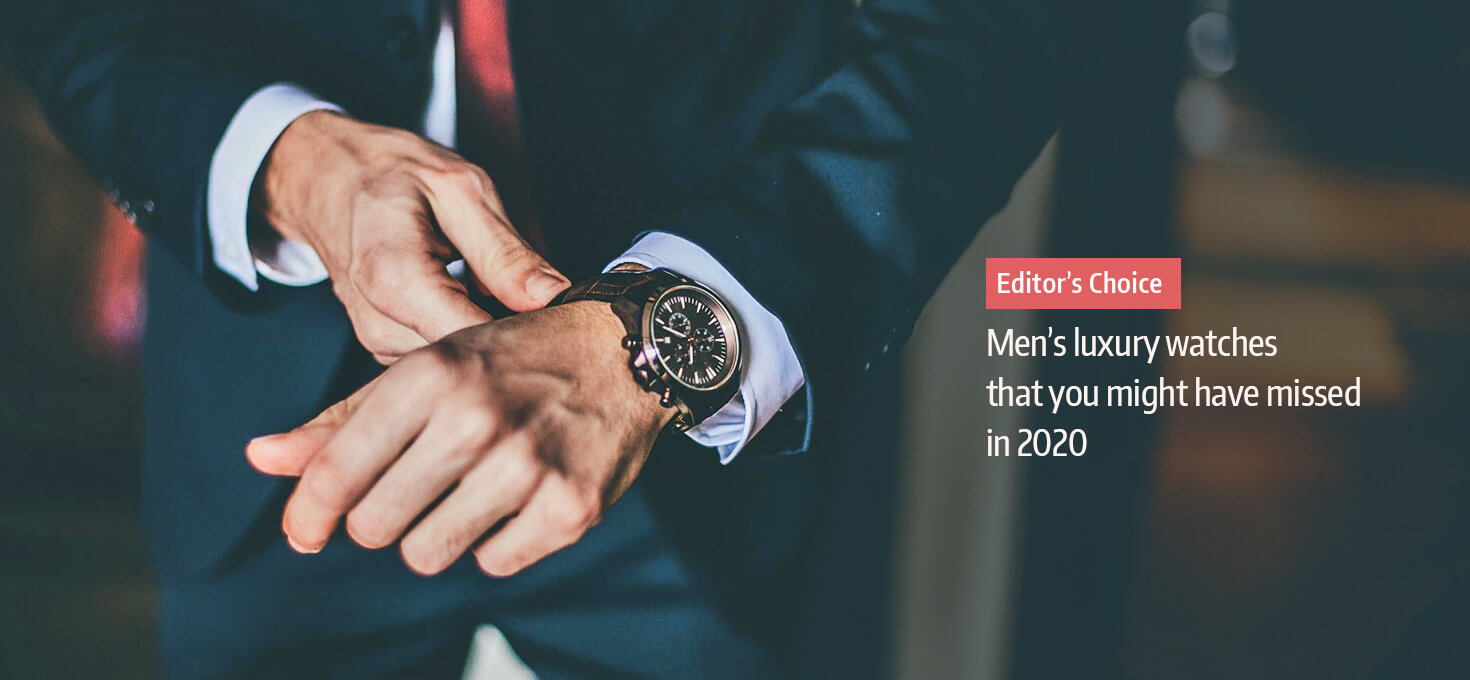
Recent Posts
Recent Comments
Archives